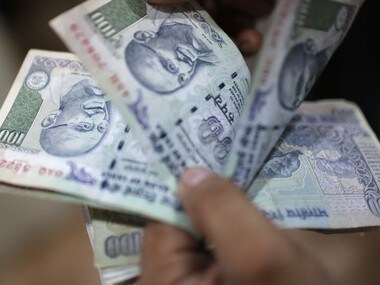The Employees’ Provident Fund Scheme (EPF) is generally mandatory for a company’s employees drawing a salary of up to Rs 21,000 a month. For those drawing more, the scheme is optional. There are a few employers who offer better terms than the EPF and hence get to set up their own trusts. In this article, we are not talking about them. Under the EPS, both the employer and employee contribute 12 percent to the provident fund that is supposed to mature and become available for withdrawal on an employee hanging his/her boots. There are some five crore members borne on the EPFO register. Under Section 80C, contributions to a recognised provident fund begets a deduction of up to a maximum of Rs 1.5 lakh. And a contribution over and above 12 percent of salary by the employer is taxable as salary. On retirement or withdrawal after five years of continuous service, the proceeds are tax-free. Currently, 15 percent of the PF contribution is invested by the EPFO in exchange-traded funds and 85 percent in debt instruments like government securities. The cumulative return on the EPFO’s investment in equity was 13.72 percent until May 2017, in the two years since it began putting money in ETFs. Fixed deposits (FDs) are generally meant for those who seek the comfort of safety. It is what the doctor ordered for senior citizens. And in keeping with this innate trait, Finance Minister Arun Jaitley had vide the Finance Act, 2018, conferred a wholesome tax benefit on senior citizens – no tax on interest from fixed deposits from banks as well as on interest from savings accounts with banks up to a generous limit of Rs 50,000. No TDS either on FD interest up to Rs 50,000. But beyond this, FDs hold little attraction. It is certainly not preferred by the young and the energetic, who want their money to grow. For them, the choice is between the Public Provident fund (PPF) and the National Pension Scheme (NPS) when it comes to building a war chest for their post-retirement lives. [caption id=“attachment_4402343” align=“alignleft” width=“380”]  Representational image. Reuters[/caption] The PPF is not employment specific. Indeed, its popularity lies in its availability for anyone who cares to save. So businessmen and professionals lap it up as much as a salaried person, who is thrifty and itching to save more than what he can under the EPF. The NPS was introduced in 2001 for government employees joining service after 1 April 2001 in place of the defined benefit plan (read free pension). The government found the defined benefit plan impossible to sustain and switched to a defined contribution plan, which is the NPS. Buoyed by its success, the government has allowed anyone at all to contribute to it, including non-resident Indians (NRIs). The PPF has a general lock-in and contribution period of 15 years with the minimum and maximum contributions per year being Rs 500 and Rs 1.5 lakh respectively. Recently the government relaxed the thaw and allowed the closure of a PPF account just after five years for meeting critical illness expenses and higher education. In the NPS, the minimum annual contribution is Rs 6,000, with the sky being the upper limit, as long as it does not exceed 10 percent of one’s salary, or 10 percent of one’s gross total income if you are self-employed. But tax benefits will be available only on Rs 1.5 lakh under Section 80CCD (1) of the Income Tax Act, and an additional Rs 50,000 will be available under Section 80CCD(2) - a total tax benefit of up to Rs 2 lakh. In other words, the NPS scores over the PPF with respect to deduction from taxable income – Rs 2 lakh as against Rs 1.5 lakh – which moreover is for a whole lot of other expenses like insurance premium, home loan repayment, among other things. What makes the NPS superior is its investment profile. As much as 50 percent of your corpus can be invested in equity. In fact the government is toying with the idea of hiking that limit to 75 percent. Therefore, the NPS is attracting the young vis-à-vis the PPF, whose investments are principally in gilt securities thus condemning subscribers to the sarkari return of 8.5 percent or thereabouts, as opposed to the market-linked returns earned by the NPS. Of course, the PPF is EEE i.e. exempt all the way, whereas the NPS is EET i.e. taxable on maturity. On retirement, 40 percent of the accumulation must be used to buy annuity. In other words, only 60 percent of the cash can be taken upfront on retirement. This coupled with the lack of an option to withdraw midcourse like in the case of the PPF, for house construction, marriage, among other things, casts the NPS in a straight-jacket – a scheme for life beyond retirement. (The writer is a senior columnist and tweets @smurlidharan)
The PPF is not employment specific. Indeed, its popularity lies in its availability for anyone who cares to save.
Advertisement
End of Article


)
)
)
)
)
)
)
)
)



